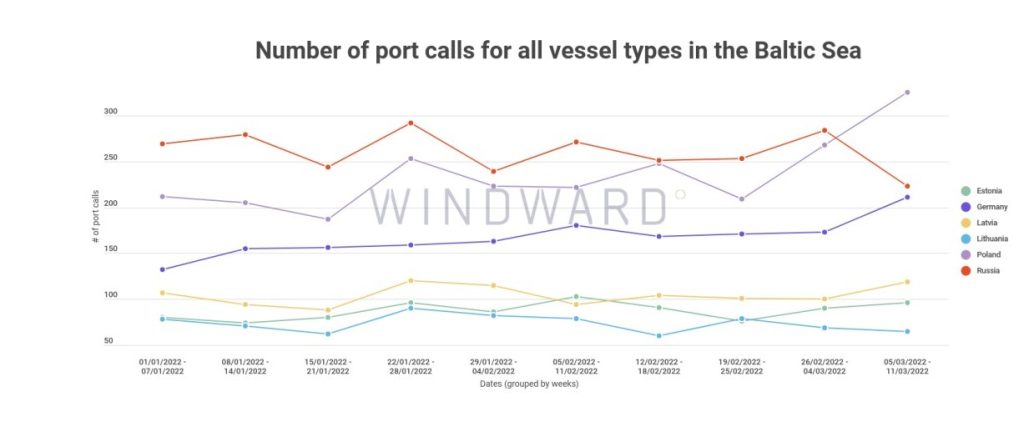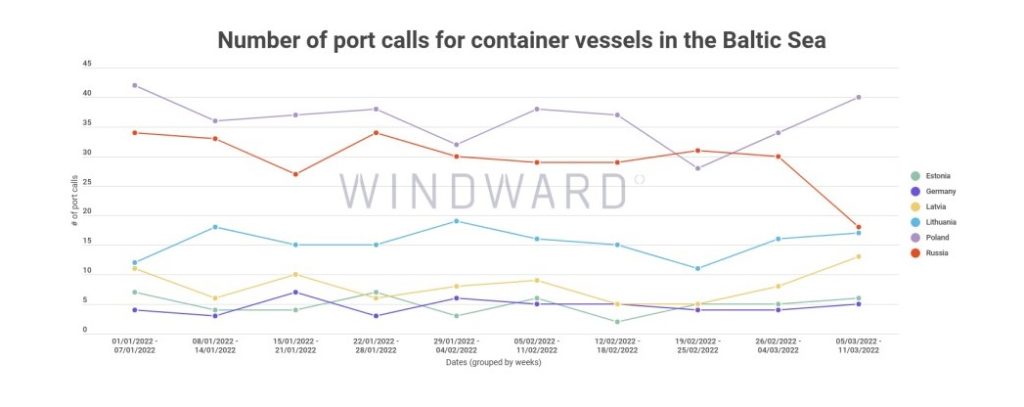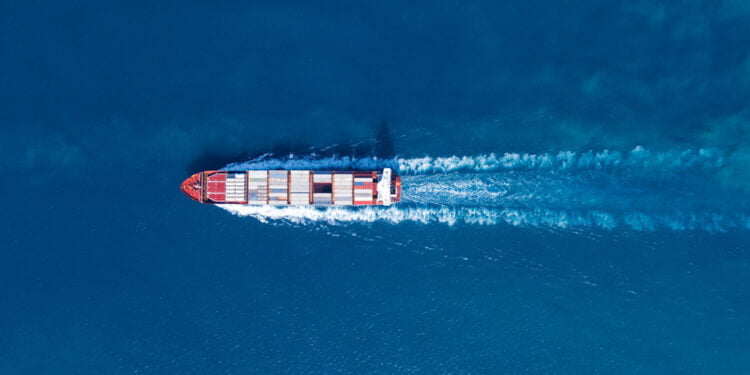Predictive Maritime Intelligence company Windward releases insights on the Baltic Sea – an important area that has been left out of the spotlight in the wake of the Russia-Ukraine crisis.
Port calls and trade flow trends in the Baltic Sea
By analyzing the proprietary behavioral data, Windward identified a decrease in the overall commercial activity in Russian ports found around the Baltic Sea. Specifically during last week, the operational function was the slowest for Russian ports in the Baltics since the beginning of 2022 and marked a decrease of over 20% in commercial vessel port calls.
[smlsubform prepend=”GET THE SAFETY4SEA IN YOUR INBOX!” showname=false emailtxt=”” emailholder=”Enter your email address” showsubmit=true submittxt=”Submit” jsthanks=false thankyou=”Thank you for subscribing to our mailing list”]
At the same time, this has been compensated for by a 17% rise in the surrounding countries – Estonia, Latvia, and Germany. Russian port operations were consistent throughout Q1 of March 2021, with no significant change, strengthening the claim that this decrease is a direct impact of the invasion, rather than a seasonal trend.

According to the graph, it appears that the decrease is even more dramatic when it comes to container vessels arriving at Russian ports. In comparison to the previous week, and the 2022 average thus far, the number of container vessels arriving in Russia last week dropped by 40%. In Estonia, Latvia, and Germany, however, we identified a significant rise of 41%.
In March 2021, there was no decrease in container vessels arriving to Russian ports in the same timeframe as our recent analysis.































































